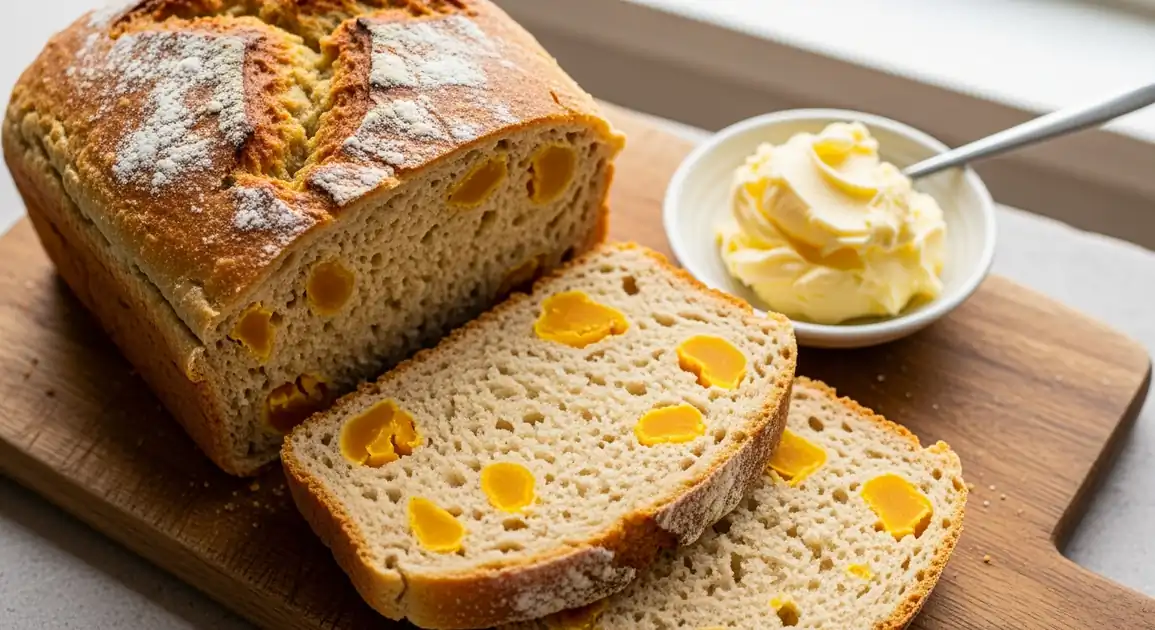Kumara Bread
Kumara Bread

Description
Auckland, New Zealand's largest city, offers some of the country's finest kumara bread, with a thriving artisanal bakery scene. The city's diverse population has influenced creative variations on this Kiwi classic, from traditional loaves to innovative fusion creations incorporating global flavors while maintaining the distinctive kumara base.
Dietary Information
Serving information
Serving style
Typically sold as whole loaves or half loaves in paper bags or wrapped in brown paper. Cafes often serve it toasted with cultured butter, avocado, or as part of breakfast platters.
Quick facts
Artisanal bakeries typically open from 7 AM - 4 PM on weekdays, 8 AM - 3 PM on weekends. Farmers' markets operate primarily on Saturday and Sunday mornings from 8 AM - 1 PM.
Safety Tips
What to Look For
-
Visible pieces of kumara throughout the bread
Authentic kumara bread should contain noticeable pieces or flecks of sweet potato, indicating real kumara rather than just flavoring or minimal amounts.
-
Bread baked fresh daily
Ask when the bread was baked - freshness affects both taste and food safety. Ideally, purchase bread baked within 24 hours.
-
Proper storage conditions
Bread should be stored in clean, dry conditions, preferably in breathable containers or wrapped appropriately, not left uncovered.
-
Clean, well-maintained premises
Bakeries, markets stalls, or cafes selling kumara bread should demonstrate good overall hygiene practices.
-
Natural coloring
The orange or purple hue should come from real kumara, not artificial coloring. The color should look natural, not overly vivid or unnaturally bright.
What to avoid
-
Moldy or stale bread
Avoid bread with any signs of mold, unusual spots, or that feels excessively dry or hard.
-
Overwhelmingly sweet taste
While kumara bread has natural sweetness, an overly sweet flavor might indicate excessive added sugar rather than reliance on the kumara's natural flavor.
-
Gummy or undercooked texture
The bread should be fully baked with a moist but not gummy interior. Undercooked bread poses food safety risks.
-
Unnaturally bright orange color
Extremely vivid orange may indicate artificial coloring rather than natural kumara content.
-
Strong off-odors or fermented smell
While sourdough varieties have a pleasant tang, any strong, unpleasant odors may indicate spoilage.
Price information
Price range
Budget tips
- Local farmers' markets like La Cigale and Grey Lynn offer better value than central city bakeries.
- Neighborhood bakeries in suburbs like Mt Eden and Sandringham often have more reasonable prices than those in tourist areas.
- Some bakeries offer smaller sizes or half loaves for NZD 4-6.
- End-of-day discounts can be found at some bakeries, though selection may be limited.
Value indicators
- Substantial weight indicates proper ingredients and moisture content.
- House-made on premises rather than brought in from wholesale bakeries.
- Visible kumara pieces and artisanal appearance.
- Fresh, aromatic quality when you smell the bread.
- Information about kumara sourcing or variety used.
Where to Find This Dish
Ponsonby
Trendy district with several artisanal bakeries offering gourmet versions of kumara bread.
Ponsonby Central, Ponsonby Road cafes
Morning (7 AM - 11 AM), Afternoon (2 PM - 4 PM)
Grey Lynn
Neighborhood known for organic and health-focused eateries with quality kumara bread options.
Grey Lynn Farmers Market, Local organic shops
Weekend Mornings (8 AM - 12 PM)
Mt Eden
Residential area with established bakeries making traditional versions of kumara bread.
Mt Eden Village, Mt Eden Road
Morning (7 AM - 10 AM)
Matakana
Just north of Auckland, this weekend destination is known for its farmers' market with excellent artisanal bread.
Matakana Village Farmers Market
Saturday Morning (8 AM - 1 PM)
Vendor Tips
- Ask specifically about which kumara variety is used - orange, purple, or gold.
- Some Auckland bakeries sell out of specialty breads by mid-morning, especially on weekends.
- Bakeries that mill their own flour often produce superior kumara bread with better texture and nutrition.
- The Auckland area grows excellent kumara - bakeries using locally grown produce often advertise this fact.
How to Order
Regional Variations
-
Auckland Artisanal
(Auckland Artisanal Kumara Bread)
The city's craft bakers often create refined versions with precise techniques, sometimes incorporating sourdough methods and organic flours.
-
Multicultural Fusion
(Fusion Kumara Bread)
Reflecting Auckland's diversity, some bakers incorporate international influences like Asian spices (ginger, five spice) or Mediterranean ingredients (olives, rosemary) into kumara bread.
-
Urban Gluten-Free
(Gluten-Free Kumara Bread)
Auckland has a strong selection of specialized gluten-free bakeries that have perfected kumara bread without wheat flour.
-
Farmers' Market Fresh
(Farmers' Market Kumara Bread)
Weekend markets feature rustic, hand-shaped loaves often made with locally grown kumara from nearby regions like Northland or Waikato.
Cultural context
History
Kumara bread emerged from the intersection of European bread-making techniques and the use of kumara (sweet potato), a staple crop in traditional Māori cuisine. Kumara has been cultivated in New Zealand since its introduction by early Polynesian settlers around 1200 CE. The modern version of kumara bread gained popularity during the farm-to-table and artisanal baking movements of the early 2000s, as bakers sought to incorporate local, indigenous ingredients into their creations. Some versions draw inspiration from traditional Māori rēwena bread (a potato-based sourdough), creating a unique bread that honors both New Zealand's indigenous heritage and its European baking influences.
Local significance
In Auckland, kumara bread represents both connection to New Zealand's indigenous food heritage and the city's innovative food scene. It's a popular choice among locals seeking authentically Kiwi foods with a contemporary twist.
Eating customs
- Aucklanders often enjoy kumara bread toasted and topped with local avocado.
- Weekend brunch culture in Auckland frequently features kumara bread as a base for various toppings.
- Increasingly paired with New Zealand cheeses on grazing platters.
- Sometimes served alongside manuka honey as a simple dessert.